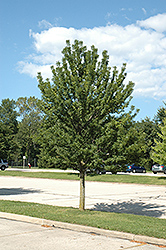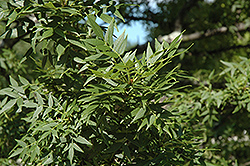Height: 20 feet
Spread: 20 feet
Sunlight:
![]()
Hardiness Zone: 4a
Other Names: Red Ash
Description:
A dwarf, globe-shaped variety of ash, typically grown on a standard stem, eventually looking like a large lollipop, with clean foliage and good fall color; the perfect accent in a mixed landscape composition, for solitary use only
Ornamental Features
Leprechaun Green Ash is primarily valued in the landscape for its ornamental globe-shaped form. It has forest green deciduous foliage. The compound leaves turn yellow in fall.
Landscape Attributes
Leprechaun Green Ash is a deciduous tree with a more or less rounded form. Its relatively fine texture sets it apart from other landscape plants with less refined foliage.
This tree will require occasional maintenance and upkeep, and should only be pruned in summer after the leaves have fully developed, as it may 'bleed' sap if pruned in late winter or early spring. Deer don't particularly care for this plant and will usually leave it alone in favor of tastier treats. Gardeners should be aware of the following characteristic(s) that may warrant special consideration;
- Insects
Leprechaun Green Ash is recommended for the following landscape applications;
- Accent
Planting & Growing
Leprechaun Green Ash will grow to be about 20 feet tall at maturity, with a spread of 20 feet. It has a low canopy with a typical clearance of 2 feet from the ground, and is suitable for planting under power lines. It grows at a fast rate, and under ideal conditions can be expected to live for 70 years or more.
This tree should only be grown in full sunlight. It is very adaptable to both dry and moist locations, and should do just fine under average home landscape conditions. It is considered to be drought-tolerant, and thus makes an ideal choice for xeriscaping or the moisture-conserving landscape. It is not particular as to soil type or pH, and is able to handle environmental salt. It is highly tolerant of urban pollution and will even thrive in inner city environments. This is a selection of a native North American species.
Disclaimer - This resource is provided for informational purposes only and does NOT reflect current availability. Inventory varies seasonally, so we cannot guarantee that every plant will be in stock at all times - please contact your favourite GardenWorks location directly for current availability. It does not include our entire inventory of plants, so be sure to visit GardenWorks to see varieties that may not be represented on this list.


